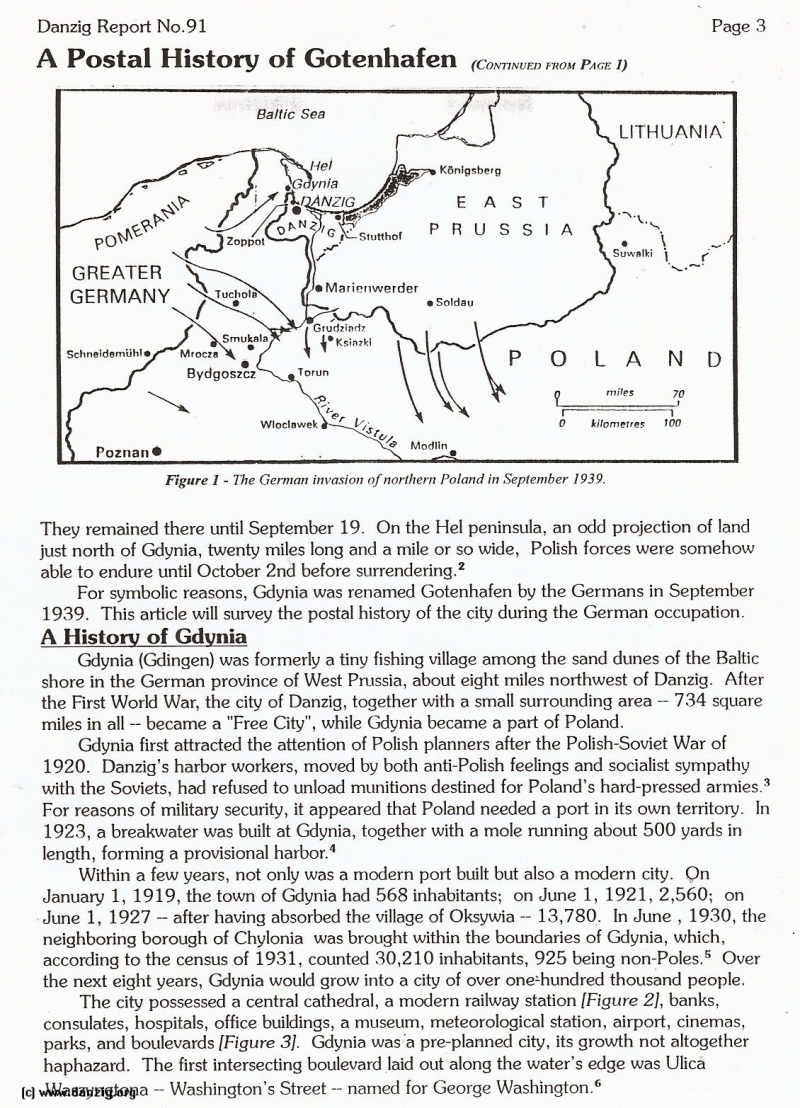
They remained there until September 19. On the He! peninsula, an odd projection of land just north of Gdynia, twenty miles long and a mile or so wide, Polish forces were somehow able to endure until October 2nd before surrendering.2
For symbolic reasons, Gdynia was renamed Gotenhafen by the Germans in September 1939. This article will survey the postal history of the city during the German occupation.
A History of Gdynia
Gdynia (Gdingen) was formerly a tiny fishing village among the sand dunes of the Baltic shore in the German province of West Prussia, about eight miles northwest of Danzig. After the First World War, the city of Danzig, together with a small surrounding area -- 734 square miles in all — became a “Free City’, while Gdynia became a part of Poland.
Gdynia first attracted the attention of Polish planners after the Polish-Soviet War of 1920. Danzig’s harbor workers, moved by both anti-Polish feelings and socialist sympathy with the Soviets, had refused to unload munitions destined for Poland’s hard-pressed armies. For reasons of military security, it appeared that Poland needed a port in its own territory. In 1923, a breakwater was built at Gdynia, together with a mole running about 500 yards in length, forming a provisional harbor.4
Within a few years, not only was a modern port built but also a modern city. On January 1, 1919, the town of Gdynia had 568 inhabitants; on June 1, 1921, 2,560; on June 1, 1927 — after having absorbed the village of Oksywia -- 13,780. In June , 1930, the neighboring borough of Chylonia was brought within the boundaries of Gdynia, which, according to the census of 1931, counted 30,210 inhabitants, 925 being non-Poles.5 Over the next eight years, Gdynia would grow into a city of over one-hundred thousand people.
The city possessed a central cathedral, a modern railway station [Figure 21, banks, consulates, hospitals, office buildings, a museum, meteorological station, airport, cinemas, parks, and boulevards [Figure 31. Gdynia was ‘a preplanned city, its growth not altogether haphazard. The first intersecting boulevard laid out along the water’s edge was Ulica Waszyngtona -- Washington’s Street -- named for George Washington.6
Danzig Report Vol. 1 - Nr. 91 - April - May - June - 1996, Page 3.
Hits: 1955
Added: 13/07/2015
Copyright: 2024 Danzig.org

